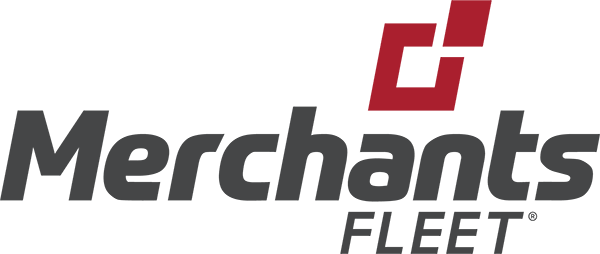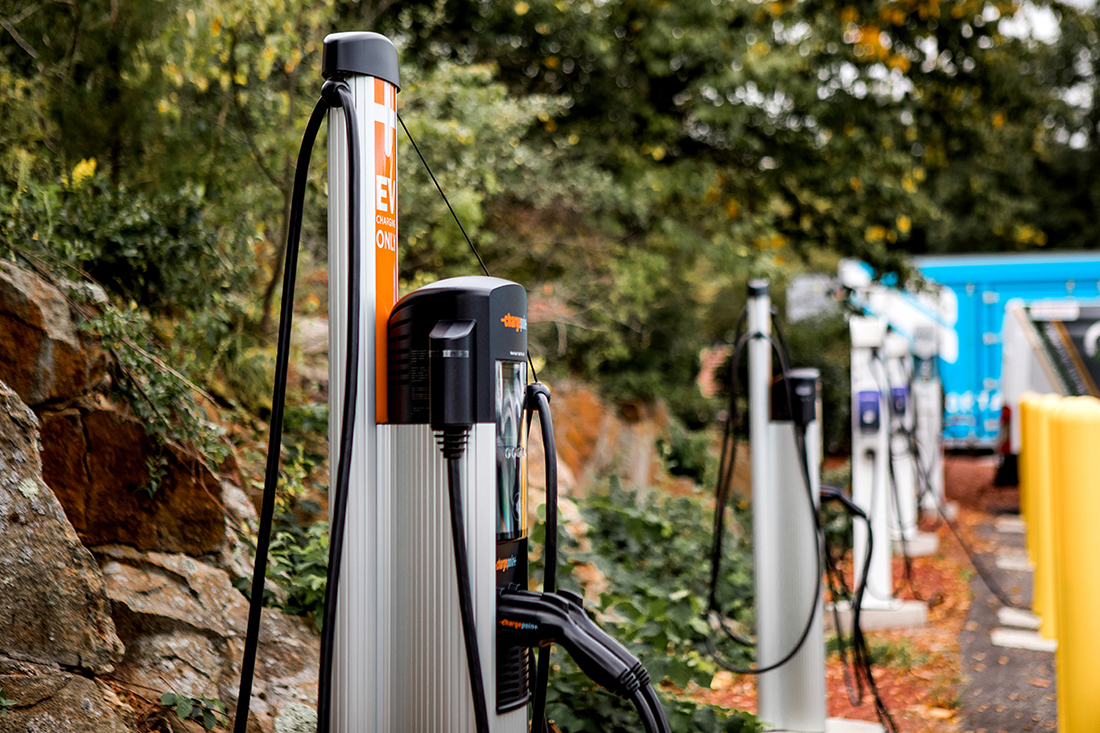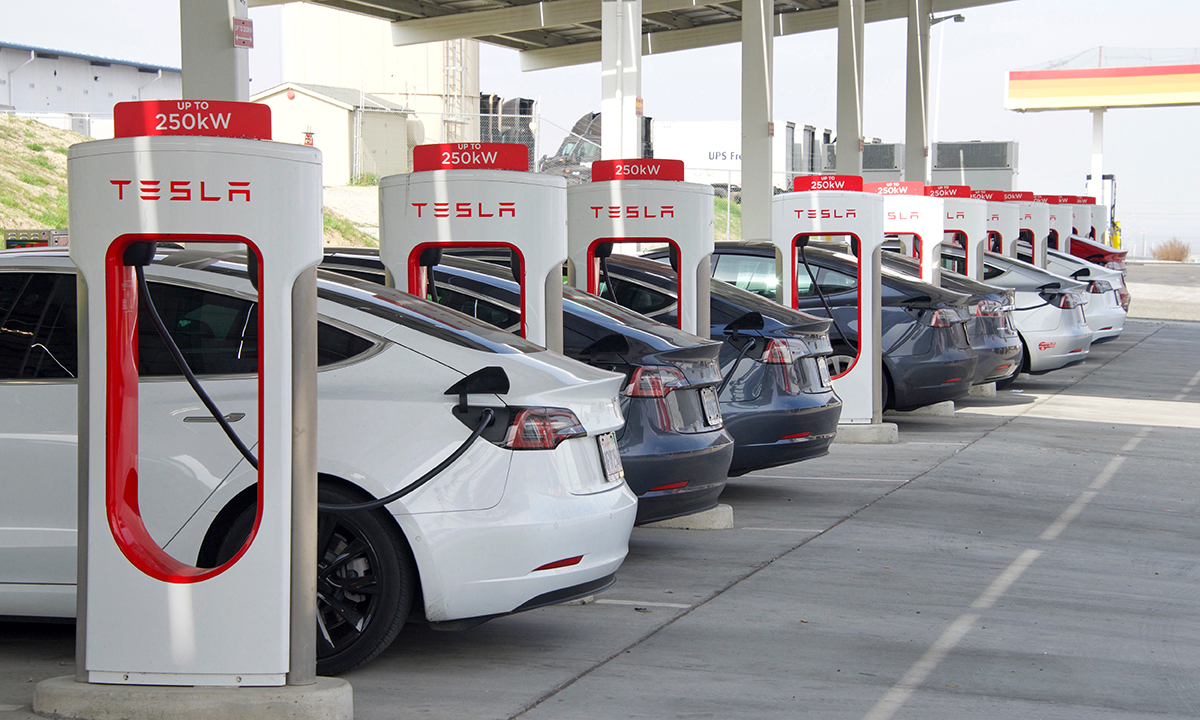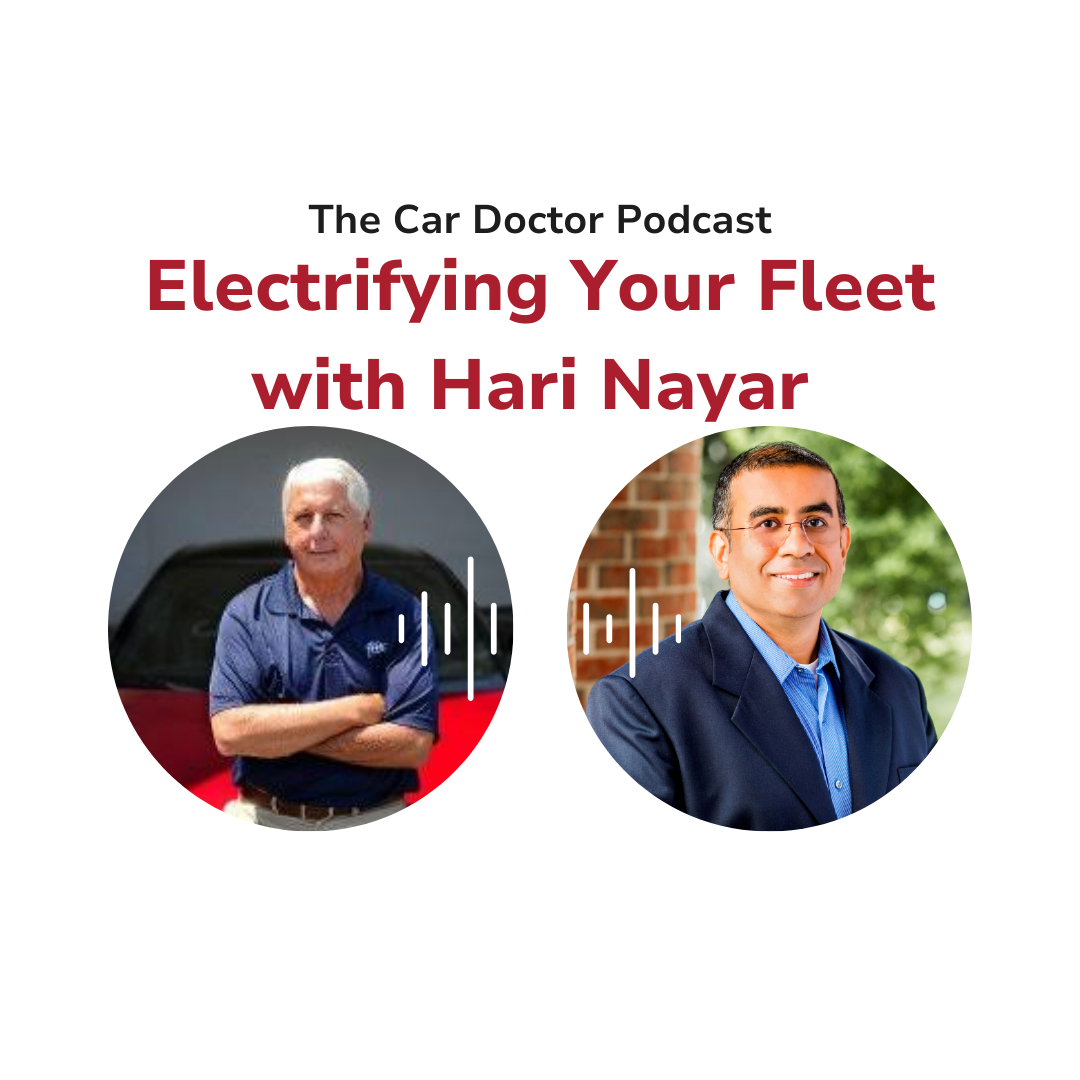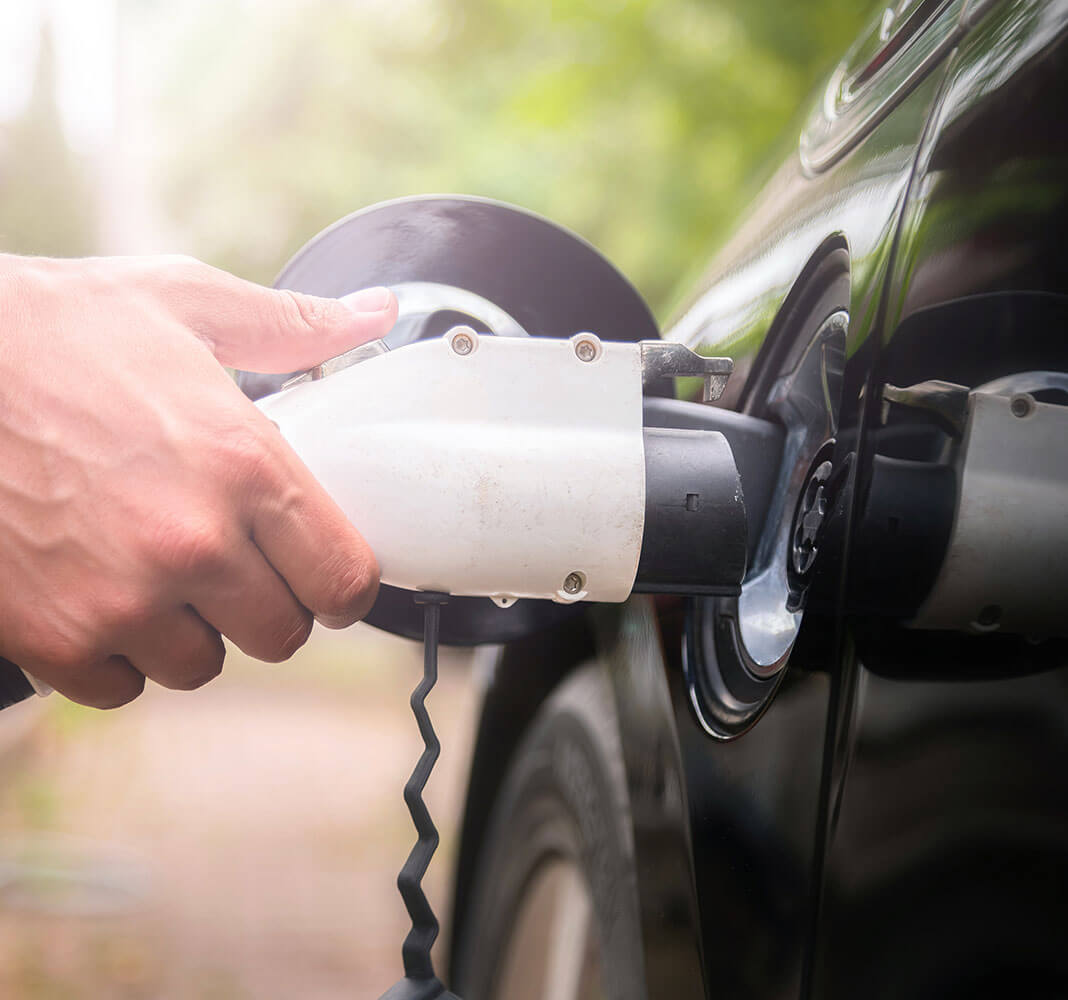Why Adoption of Tesla’s NACS Plug is Great for the Fleet Industry
Barring safety, technology, and efficiency, the way we interact with automobiles has remained relatively unchanged since the 1930s. Today, every individual and organization that adopts electric vehicles (EVs) is helping to drive an industry transformation toward sustainability and eliminating our dependance on fossil fuels. As the market share of EVs continues to increase and they move beyond being a niche product offering, early adopters are starting to feel the impact of a lack of universal charging standards, otherwise known as charging interoperability.
The Current Landscape of EV Charging
When looking at the EV market today, buyers could take delivery of a vehicle with one of four different charging plugs based on the brand and trim of vehicle they purchase. Tesla vehicles have been produced with a previously proprietary North American Charging Standard (NACS) charging port, while competitive vehicles could use CHAdeMO (Nissan Leaf), J1772 for level 2 charging or CCS (Combined Charging System) that allows for level 3 charging. All of these plugs have the same purpose – connect a charging station cable to your EV’s charging port, but they are all different shapes and unable to be used interchangeably without an adapter. This means that a Ford Mustang Mach-E can’t recharge at a Tesla Supercharger and your Tesla Model S isn’t able to use an Electrify America fast charger, natively at least. For tech-savvy drivers, this isn’t much of an issue, but for universal EV adoption, this can be a major roadblock.
Recently, Ford Motor Company, General Motors, Rivian, Polestar, Volvo and Mercedes-Benz have made commitments to remedy the issue of charging interoperability. In news that shocked the industry, these automakers have announced that they have plans to equip future vehicles with NACS charging ports, with other manufactures announcing that they have this change under consideration, too. This adoption is also being paralleled at the state level, with Washington and Texas requiring NACS on future charging station installations to be eligible for public funds.
At first take, this news might not sit well with owners of EV fleets comprised of competing brands. While some will try to make the case that EVs using the J1772 and CCS connectors will follow CHAdeMO in becoming “obsolete” in North America, the market share that these connectors have mean that this will likely be a gradual transition compared to an instantaneous switchover. Moreover, OEMs have made commitments that will offer adapters that will assure cross compatibility between J1772 or CCS to NACS – thereby eliminating a perception that EVs on the road today will be unable to charge on Tesla NACS systems.
Driving Interoperability and Standardization
As more OEMs implement the Tesla NACS connector as the way to charge their vehicles, the industry will keep moving toward standardization, the missing puzzle piece for widespread EV adoption. A single charging standard eliminates the confusion of finding the right charging station, what adapter to use, and makes the entire experience simpler for the end user. With further adoption of the NACS connector, the hope is this will also expand “Plug and Charge” capability throughout the industry, allowing drivers to skip the payment process with credit card swipes, QR codes, mobile apps or RFID cards and allow payment directly from the vehicles.
Uncertainty might be scary for fleet managers that recently invested in vehicles that use the J1772 and CCS connectors, but your drivers will not be left behind – a simple, affordable adapter is all that’s needed to utilize a different style of charging connector on their vehicle. A good analogy is the shift in smartphones from proprietary connectors to USB-C: a single connector makes it easier for the consumer and creates a better experience for everyone involved – those using phones without the new style of connector can continue to use their phones without a problem, only needing an adapter to support newer plugs.
The Impact to Charging Infrastructure
The adoption of NACS plug as an industry standard will have a positive effect on harmonizing public and private charging infrastructure over the coming years. In today’s market, there are a confusing number of physical plugs for public charging: Tesla Superchargers for Tesla vehicles that provide very high-speed level 3 charging, level 2 chargers that use J1772 or CHAdeMO, and level 3 chargers that use CCS or CHAdeMO. One standard will eliminate the segmentation of stations, improve accessibility, and make it easier for people to physically charge their vehicles – the NACS plug is a slimmer, more elegant option compared to CCS connectors that are heavy and unwieldy by comparison.
To ease the concern on those with current EVSE installations, manufacturers are pursuing retrofit options to update existing charging hardware with NACS connectors. Merchants Fleet has confirmed with at least one leading EVSE provider that a field swap of J1172 or CCS to NACS is possible, with other manufacturers pursuing this option for their equipment. The good news is a simple adapter (ranging from $50 to $200) is all that will be needed for new vehicles with the NACS connector to utilize existing charging hardware if a NACS retrofit has not already been performed.
Fleet Managers Will Benefit from a Single Standard
Managing an EV fleet of mixed OEMs is made more complicated by needing to address multiple types of charging connectors, but the implementation of a single standard will make it easier to manage drivers in the field and simplify vehicle selection and deployment. This all boils down to operational efficiency, greater compatibility, and ease of fleet management.
The change over to NACS will not be felt for at least a year, meaning vehicles on lease today may even be cycled out before NACS connectors become more available to the public. If you’re on the fence about adopting EVs into your fleet, this shouldn’t prevent you from making the move, but knowing that drivers might need an adapter in a few years should be part of the conversation.
As early adopters, anything that benefits the end-user and can help accelerate EV adoption is a good thing. Merchants is excited to see the innovation potential that the shift towards NACS will bring to the industry, with automakers providing technologically improved products that enable improved public charging experiences for drivers.
Will the Shift to NACS Will Impact Your EV Fleet?
If you have any questions about NACS and the impact this will have on your EV fleet or charging infrastructure, our EV consultants are ready to help. Contact us today for more information.
